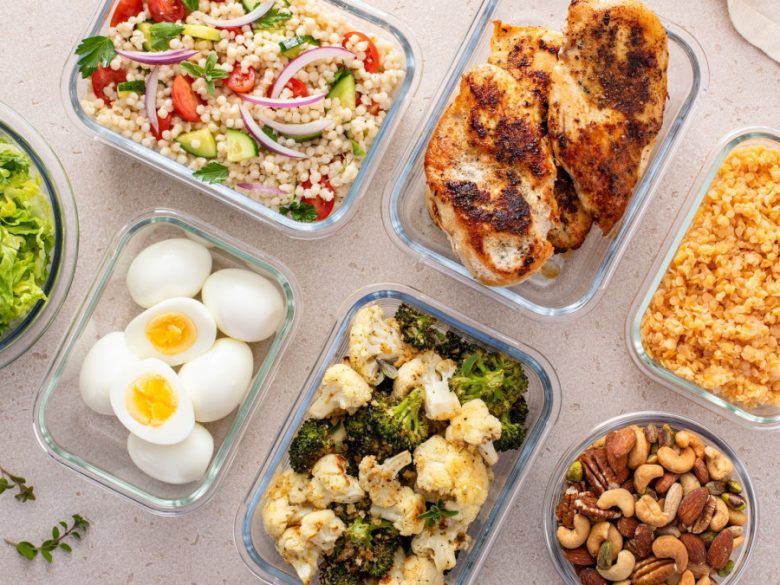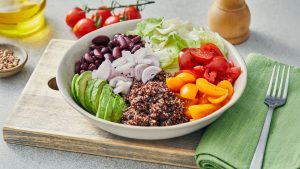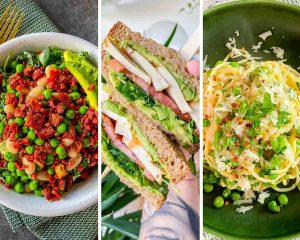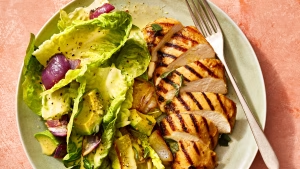Sunday afternoon rolls around, and you’re faced with the same dilemma: what to eat for the next seven days? Between work meetings, school pickups, and evening activities, finding time to cook nutritious meals can feel impossible. That’s where meal prep comes to the rescue.
Meal prep isn’t just a trendy hashtag—it’s a game-changing strategy that transforms your relationship with food and time. By dedicating a few hours on the weekend to planning and preparing your meals, you’ll save precious time during busy weekdays, eat healthier, and reduce the stress of constant “what’s for dinner?” decisions. Plus, you’ll likely save money by avoiding last-minute takeout orders and impulse grocery purchases.
Whether you’re a meal prep beginner or looking to refine your system, this comprehensive guide will walk you through everything you need to create a week’s worth of delicious, nutritious meals that work for your lifestyle.
Planning Your Meal Prep Success
Effective meal prep starts long before you step into the kitchen. Taking time to assess your weekly schedule and dietary needs sets the foundation for success.
Start by mapping out your week. Which days will be particularly hectic? When do you have more time to cook fresh? Understanding your schedule helps you decide which meals need to be fully prepared ahead of time versus those you can quickly assemble from prepped components.
Next, consider your family’s dietary preferences and nutritional needs. If you’re cooking for picky eaters, stick to familiar flavors while sneaking in extra vegetables. For those following specific dietary requirements like gluten-free eating, focus on naturally gluten-free whole foods like rice, quinoa, lean proteins, and fresh vegetables.
When choosing recipes, aim for variety to prevent boredom. Select dishes that reheat well and maintain their texture after storage. Think hearty soups, grain bowls, and protein-packed salads rather than delicate fish or crispy foods that don’t fare well as leftovers.
Sample Meal Prep Menu for Maximum Nutrition
Here’s a balanced weekly menu that incorporates high-protein options and can be easily adapted for various dietary needs:
Breakfast Options
Overnight Oats with Protein Power
Combine rolled oats with Greek yogurt, chia seeds, and your choice of milk. Add berries, sliced almonds, and a drizzle of honey. This protein-rich breakfast provides sustained energy and can be customized with different flavor combinations throughout the week.
Make-Ahead Smoothie Packs
Pre-portion frozen fruits, spinach, and protein powder into freezer bags. In the morning, simply blend with liquid for an instant nutrient-packed breakfast. Each pack delivers approximately 20 grams of protein to keep you satisfied.
Lunch Solutions
Mediterranean Quinoa Bowls
Cook a large batch of quinoa and portion it with roasted chickpeas, cucumber, cherry tomatoes, and crumbled feta. This naturally gluten-free option provides complete protein from the quinoa and chickpeas combination.
Chicken and Veggie Wraps
Use grilled chicken breast, hummus, and plenty of fresh vegetables wrapped in whole grain or gluten-free tortillas. The lean protein helps maintain steady blood sugar levels throughout the afternoon.
Dinner Favorites
Sheet Pan Lemon Herb Salmon
Bake salmon fillets alongside roasted vegetables like broccoli, sweet potatoes, and bell peppers. Salmon provides heart-healthy omega-3 fatty acids and approximately 25 grams of protein per serving.
Hearty Lentil Soup
A big batch of lentil soup serves multiple purposes—it’s filling, freezes beautifully, and provides plant-based protein. One cup of cooked lentils delivers about 18 grams of protein along with fiber to keep you satisfied.
Shopping and Prep Day Strategy
Transform your grocery shopping from a stressful scramble into an efficient operation. Create your shopping list by organizing items according to your store’s layout—produce, proteins, pantry items, and dairy. This systematic approach saves time and ensures you don’t forget essential ingredients.
Focus your shopping on the store’s perimeter where fresh, whole foods are typically located. Stock up on versatile staples like eggs, Greek yogurt, lean proteins, seasonal vegetables, and whole grains. These ingredients form the foundation of countless meal combinations.
Prep day works best when you tackle tasks in a logical order. Start by washing and chopping all vegetables, then cook grains and proteins simultaneously. While rice or quinoa simmers on the stovetop, you can roast a sheet pan of vegetables in the oven and grill chicken on another burner.
Batch cooking is your secret weapon. Prepare large quantities of versatile components that can be mixed and matched throughout the week. Cook extra chicken that can become salad protein on Monday, wrap filling on Tuesday, and soup addition on Wednesday.
Smart Storage and Reheating Solutions
Proper storage extends the life of your prepped meals and maintains food safety. Invest in quality glass containers with tight-fitting lids—they’re microwave-safe, don’t retain odors, and stack efficiently in your refrigerator.
Store wet and dry ingredients separately when possible. Keep dressings and sauces in small containers to add just before eating, preventing soggy salads and maintaining texture. Prepared salads stay fresher when stored with a paper towel to absorb excess moisture.
Most prepped meals maintain quality for 3-4 days in the refrigerator. Label containers with contents and dates to track freshness. For longer storage, many soups, stews, and grain-based dishes freeze well for up to three months.
When reheating, add a splash of water or broth to prevent drying out. Microwave in 30-second intervals, stirring between, for even heating. Some foods like roasted vegetables benefit from a quick reheat in a skillet to restore crispness.
Essential Tips for Meal Prep Success
Start small if you’re new to meal prep. Rather than attempting to prepare every meal for the week, begin with just lunches or dinners. Gradually expand your prep routine as you become more comfortable with the process.
Embrace flexibility in your meal planning. Prepare versatile components that can be combined in different ways rather than complete meals. For example, roasted vegetables can top grain bowls, fill omelets, or become soup ingredients.
Keep a running list of successful recipes and combinations. Note which meals your family enjoyed and which storage methods worked best. This meal prep journal becomes invaluable for future planning.
Don’t forget about snacks in your prep routine. Portion nuts, cut vegetables, and prepare hummus or Greek yogurt dips. Having healthy snacks readily available prevents less nutritious impulse choices.
Stay organized with clear labeling and a logical storage system. Group similar items together in your refrigerator and use a “first in, first out” rotation to minimize food waste.
Frequently Asked Questions
What are the best containers for meal prep?
Glass containers with airtight lids are ideal for meal prep. They’re microwave-safe, don’t retain odors or stains, and allow you to see contents easily. Look for containers with dividers for keeping different foods separated, and choose stackable designs to maximize refrigerator space.
How long do prepped meals last in the refrigerator?
Most prepared meals stay fresh for 3-4 days when stored properly in airtight containers. Meals with seafood should be consumed within 2 days, while hearty soups and stews often improve in flavor and can last up to 5 days. Always trust your senses—if something looks, smells, or tastes off, discard it.
Can I freeze prepped meals?
Many meal prep dishes freeze beautifully for up to 3 months. Soups, stews, casseroles, and grain-based dishes are excellent freezer candidates. Avoid freezing meals with high water content vegetables like lettuce or cucumber, as they become mushy when thawed. Always cool meals completely before freezing and leave space in containers for expansion.
How do I prevent my prepped salads from getting soggy?
Store wet and dry ingredients separately. Keep dressings in small containers and add just before eating. Place a paper towel in your salad container to absorb excess moisture, and store heartier greens like kale or spinach rather than delicate lettuce varieties.
What if my family gets bored with the same meals?
Focus on preparing versatile components rather than complete meals. One batch of grilled chicken can become salad protein, wrap filling, pasta topping, or soup addition. Vary your seasonings and sauces to create different flavor profiles from the same base ingredients.
Start Your Meal Prep Journey Today
Meal prep transforms chaotic weeknight dinners into calm, nourishing experiences. By investing a few hours on the weekend, you’re giving yourself the gift of time, better nutrition, and reduced stress throughout the week.
Remember that meal prep is a skill that improves with practice. Start with simple recipes and basic techniques, then gradually expand your repertoire as you discover what works best for your family’s preferences and schedule. The key is consistency—even small meal prep efforts make a significant difference in your daily routine.
Your future weeknight self will thank you for taking this step toward more organized, healthful eating. Grab your containers, make your shopping list, and start creating the meal prep system that will revolutionize your week.




